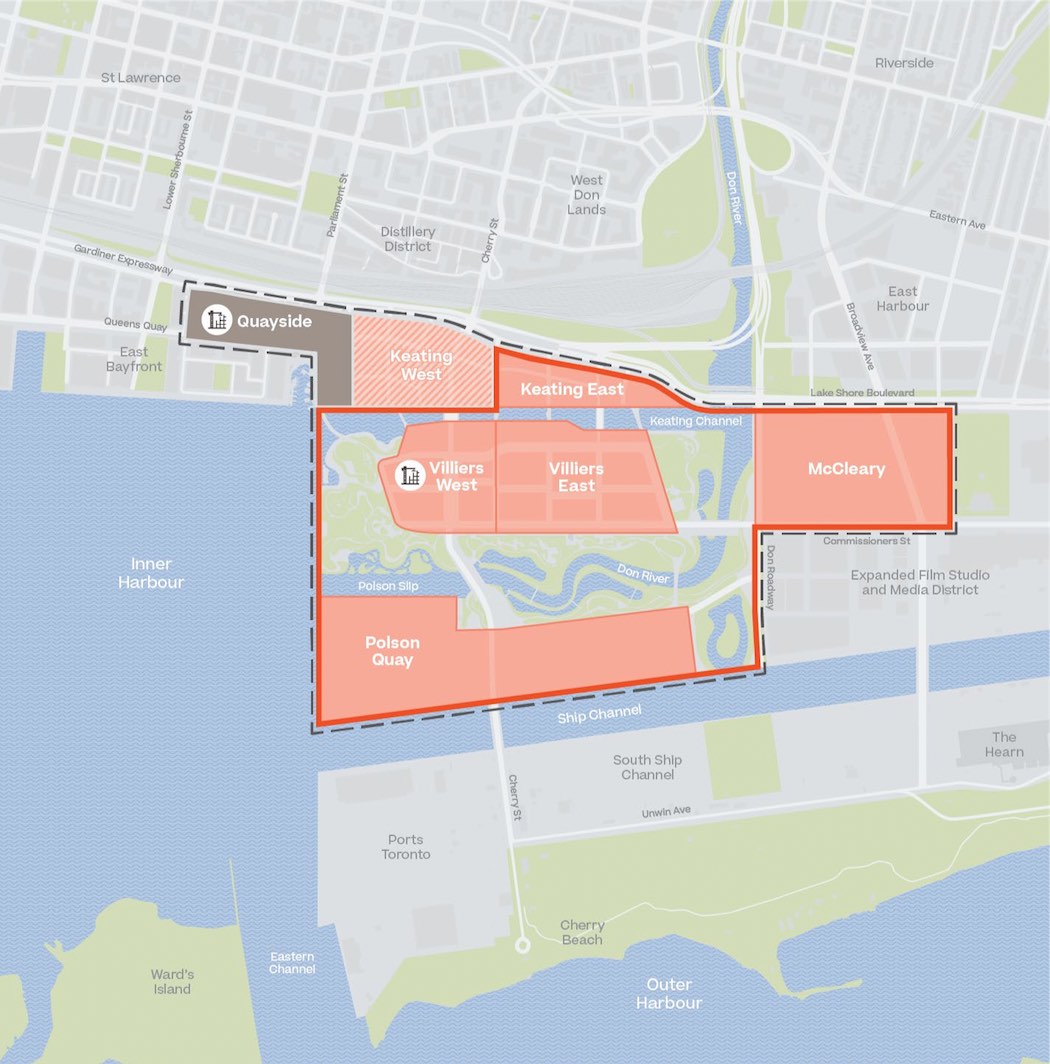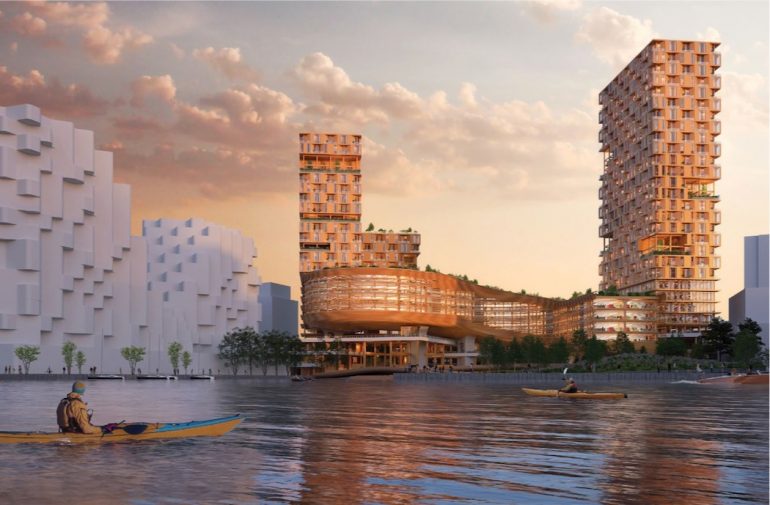As Sidewalk Labs publicly releases a 1,500-page proposal outlining its detailed plan for the Quayside project, Waterfront Toronto has come out with major concerns that could affect the project moving forward.
“This project has stirred vigorous debate and, regardless of the outcome, raises issues to consider.”
On Monday, Sidewalk Labs shared its Master Innovation and Development Plan (MIDP) entitled, ‘Toronto Tomorrow: A New Approach for Inclusive Growth.’ The plan offers more detail on the Sidewalk Toronto project, from the breakdown of residential units to the cost of LRT development that it hopes will go through the eastern waterfront area. Sidewalk Labs stated that along with its partners it will provide up to $1.3 billion in funding and financing, which it expects will create $38 billion in investment from third parties, by 2040.
In response, Stephen Diamond, Waterfront Toronto’s board chair, released an open letter addressing some of the organization’s major concerns with the proposal. Waterfront Toronto was not involved in creating the proposal specifically, but the two organizations did work together on research, idea generation, and public consultation.
In its open letter, Waterfront Toronto outlined four main concerns: development of an overall IDEA district, Sidewalk Labs proposal to be the lead developer at Quayside, requiring additional government commitments, and concerns over data collection.
“This project has stirred vigorous debate and, regardless of the outcome, raises issues to consider,” said Diamond. “Whether the Quayside project proceeds or not, the conversation we are having is important for all of Toronto.”
IDEA District
In the MIDP, Sidewalk Labs proposes the creation of an Innovative Design and Economic Acceleration (IDEA) District that will take up 77 hectares (190 acres), including the Quayside site itself and the area surrounding it. This will include 62 hectares (15 acres) of the River District, which the MIDP referred to as a “small portion of the eastern waterfront” to be developed over 20 years.
The area would include Villiers West, just southeast of Quayside, which would house the proposed new Google headquarters as well as an innovation hub for entrepreneurs and businesses.

“The IDEA District can exceed Waterfront Toronto’s ambitious priority outcomes, and do so in a way that is both financially achievable and replicable in other parts of Canada,” the report states, calling the area “a thriving ecosystem of tech startups, with a focus on the emerging industry of urban innovation.”
RELATED: Waterfront vote delayed, new public funds needed, critics turn to Digital Charter
Sidewalk Labs is proposing to work with Waterfront Toronto to prepare a set of “Innovative Design Guidelines and Standards” to ensure that all developments in the IDEA District achieve “desired outcomes.” The proposal stated that Waterfront Toronto would be responsible for working with the government to approve them and then ensure their implementation as development proceeds.
However, Waterfront Toronto expressed concern that the IDEA District oversees a “much larger area” than the 12 acres of Quayside. Waterfront Toronto’s open letter noted that the organization has already expressed to Sidewalk Labs that “the concept of the IDEA District is premature and that Waterfront Toronto must first see its goals and objectives achieved at Quayside before deciding whether to work together in other areas.”
Waterfront Toronto also noted that even if it decided to move forward with this particular proposal that is a much larger area, it would only do so with the “full collaboration and support of the City of Toronto, particularly where it pertains to city-owned lands.”
Sidewalk as lead developer of Quayside
In its proposal, Sidewalks Labs also states that it would lead real estate development with local partners in Quayside and Villiers West, noting those were the only two areas it planned to do so.
Waterfront Toronto, however, balked at the idea, stating that the Plan Development Agreement (PDA) it signed with Sidewalk Labs did not contemplate Sidewalk Labs taking that kind of lead.
“Should the MIDP go forward, it should be on the basis that Waterfront Toronto lead a competitive, public procurement process for a developer(s) to partner with Sidewalk Labs,” Diamond stated in the open letter.
In the MIDP, Sidewalk Labs states that it and its partners would contribute $900 million in equity investment to support the $3.9 billion Quayside and Villiers project. This amount would be in addition to Sidewalk Labs reinvesting more than $2 billion of proceeds received as the project progresses through its suggested phases. The MIDP claims that $2 billion would generate multiple times that amount in tax revenues “for the three orders of government and in economic activity more broadly.”
Outside of Quayside and Villiers East, Sidewalk Labs has not proposed to be the main developer for the rest of the area, but plans to create revenue from the performance payments third parties that are pursuant to “terms to be agreed upon” over the next few months with Waterfront Toronto and government players. The MIDP states that if the pace of development in the area exceeds expectations, as a result of its interventions in the area, and if certain outcomes such as sustainability goals are achieved, it would receive additional performance payments (a fixed number not based on percentages) over time.
Data collection
Waterfront Toronto also raised concerns over data collection, usage, and governance, which has been a major source of debate surrounding the Quayside project since it was first announced.
“We will require additional information to establish whether they are in compliance with applicable laws and respect Waterfront Toronto’s digital governance principles,” Waterfront Toronto stated.
RELATED: CCLA files suit over Sidewalk Labs, #BlockSidewalk holds rally
In its proposal, Sidewalk Labs states that it is not seeking to sell personal information to third parties or use it for advertising. It also committed to not disclose personal information to third parties, including other Alphabet companies, without explicit consent. It also proposed an “independent entity” that would approve proposed uses of urban data, even for Sidewalk Labs itself.
Future government commitments will be required
Finally, Waterfront Toronto argued that Sidewalk Labs’ proposal would require future commitments by multiple levels of government to help actually realize the full project, including the extension of the LRT Sidewalk Labs, hopes to have extended before it begins development.
Waterfront Toronto also pointed out that new roles for public administrators, changes to regulations, and government investment would also require future commitments that it isn’t authorized to give.
Sources told BetaKit that Sidewalk Labs has admitted that it understands that Waterfront Toronto doesn’t have all the necessary authority to approve everything in its plan and acknowledges that it is going to need to other entities to make commitments if that plan is to move forward.
BetaKit reached out to multiple advocates and critics of the plan. First to respond was Saadia Muzaffar, a tech entrepreneur, Toronto resident, and one of the founding members of #BlockSidewalk, was also skeptical about the proposal.
“Personally, I am uninterested in debating the merits of what the content of this proposal is,” she told BetaKit. “The proposal is theatre. It is misdirection. It is an attempt to get us to waste time being asked about the colour of the wood the Trojan horse should be built with.
“I have orders-of-magnitude more concerns with the anti-democratic nature of how the last 20 months of this project have been allowed to unfold, and the complicity of three levels of government in allowing corporate capture of public process, all of which leaves the residents of Toronto saddled with the risk, while being robbed of that critical point in public engagement and democratic process where we can say no and reject a bad deal.”
Developing…


